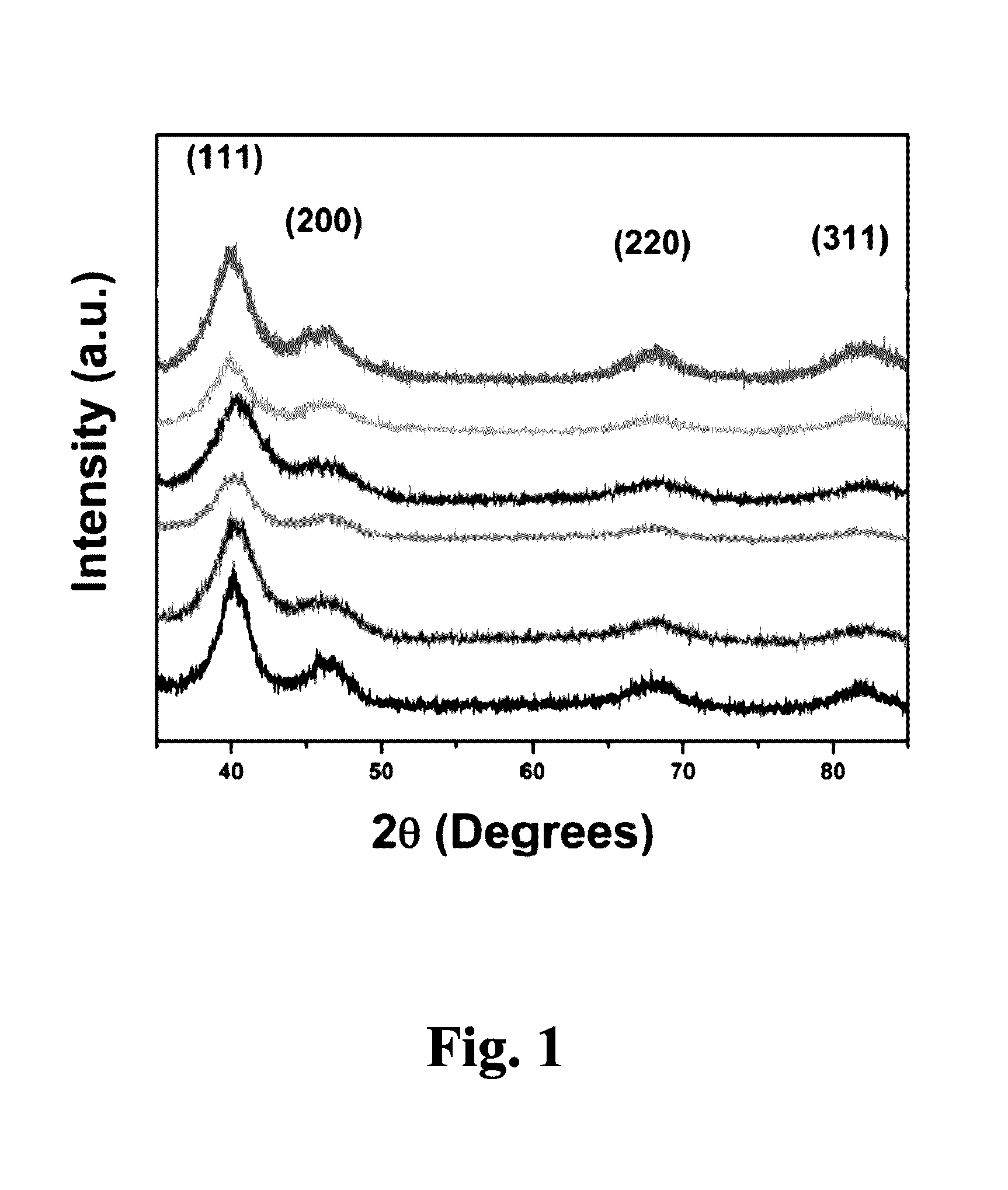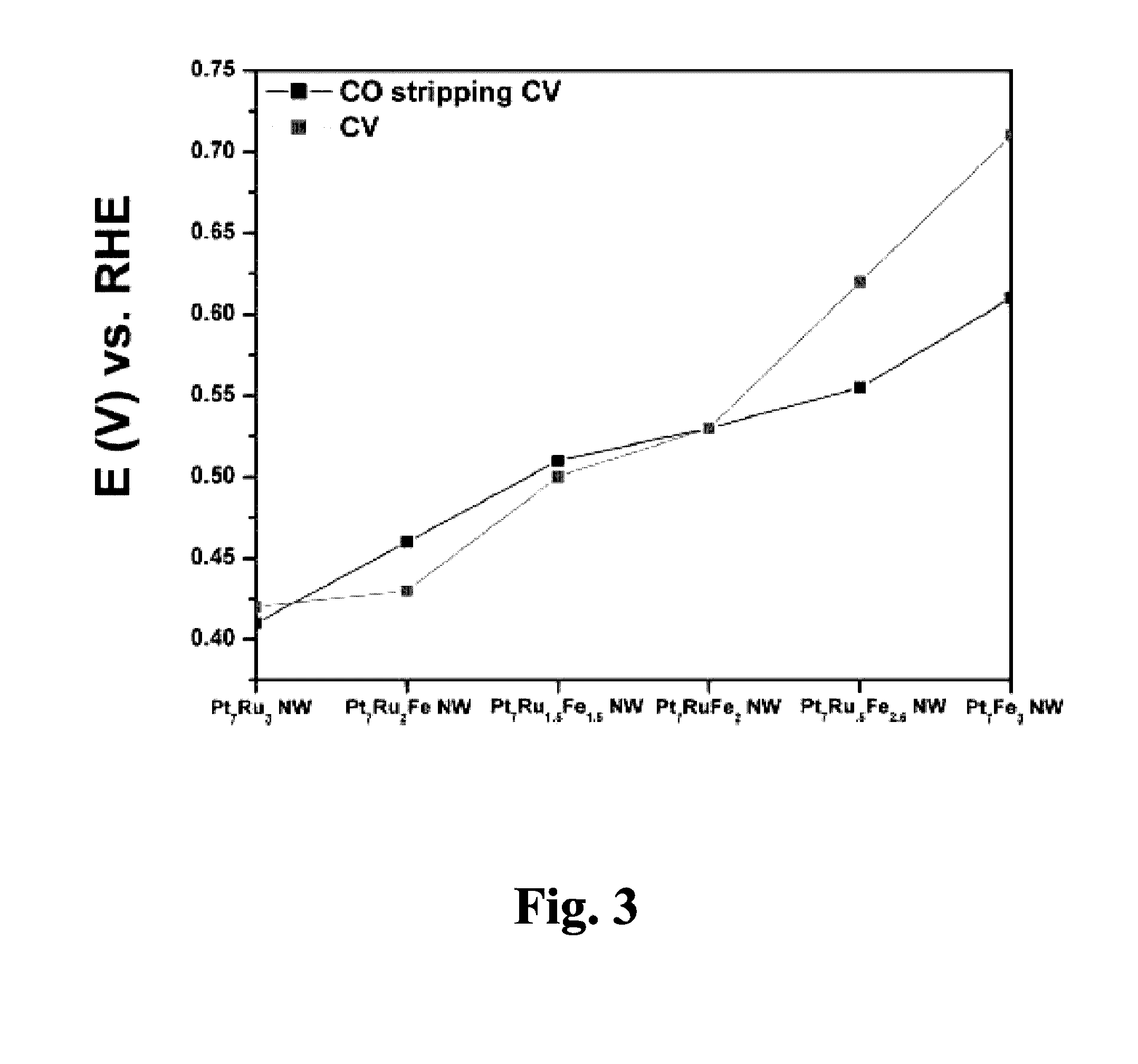ULTRATHIN, TERNARY ALLOY PtRuFe NANOWIRES, AND METHODS OF MAKING SAME
a technology of ternary alloys and nanowires, applied in the field of producing ternary metal-based nanowire networks, can solve the problems of slow kinetics and poor durability, high price of platinum, and decrease in the number of active sites available for mor
- Summary
- Abstract
- Description
- Claims
- Application Information
AI Technical Summary
Problems solved by technology
Method used
Image
Examples
examples
[0049]Starting from a high-performance binary Pt7Ru3 sample as a “base control,” a series of ternary PtRuM nanowire catalysts possessing various controlled atomic compositions of metal dopants (Ru and Fe) have been synthesized, utilizing an inverse micellar protocol that had not as yet been previously applied to such chemically complex electrocatalytic systems. As comparative controls, Pt7Ru3 NWs, Pt7Fe3 NWs, and Pt NWs were generated to probe the effect of tailoring chemical composition upon the corresponding electrochemical activity. The present ultrathin NW catalysts possessed diameters of approximately 2 nm and expected chemical compositions, as determined from EDAX data. HRTEM demonstrated that the presently synthesized nanowires were polycrystalline in nature and consisted of short segments of crystalline planes, as further corroborated by SAED patterns.
[0050]The collected CVs gave rise to shifts in the oxide region, suggesting that interactions between Pt, Ru, and Fe can be e...
PUM
| Property | Measurement | Unit |
|---|---|---|
| diameters | aaaaa | aaaaa |
| diameters | aaaaa | aaaaa |
| diameter | aaaaa | aaaaa |
Abstract
Description
Claims
Application Information
 Login to View More
Login to View More - R&D
- Intellectual Property
- Life Sciences
- Materials
- Tech Scout
- Unparalleled Data Quality
- Higher Quality Content
- 60% Fewer Hallucinations
Browse by: Latest US Patents, China's latest patents, Technical Efficacy Thesaurus, Application Domain, Technology Topic, Popular Technical Reports.
© 2025 PatSnap. All rights reserved.Legal|Privacy policy|Modern Slavery Act Transparency Statement|Sitemap|About US| Contact US: help@patsnap.com



